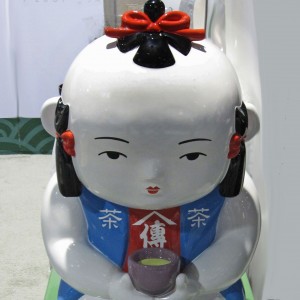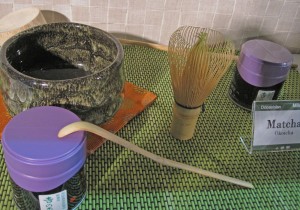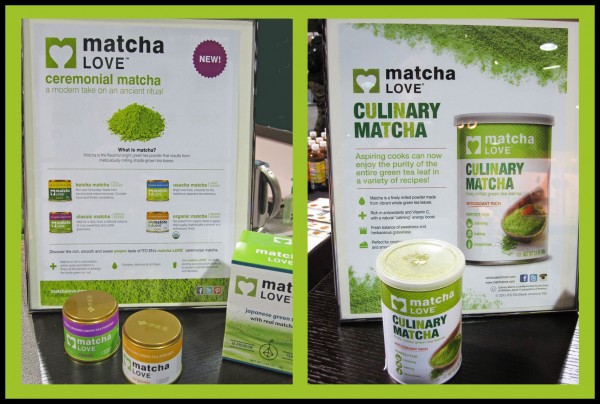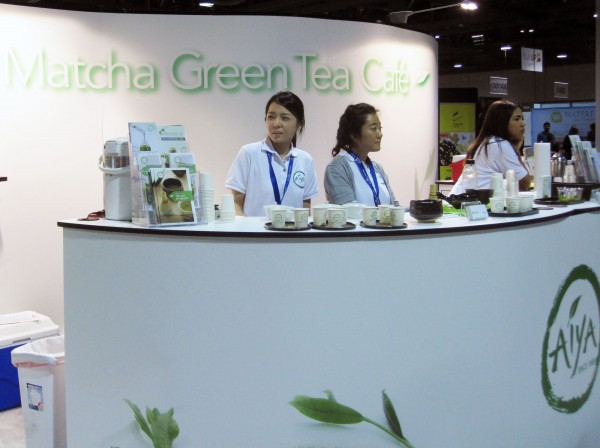
Matcha seems to fit the mood of the moment. It’s electric greenness reflecting the colour that we associate with health and nature. It was seen everywhere at World Tea Expo, 2015 or was it just that I was experiencing The Baader-Meinhof Phenomenon!
Matcha’s Origins
Matcha’s use has strayed somewhat from its original ceremonial origins. Ceremonial matcha grades of Usucha (thin) and Koicha (thick) have been available in select tea shops for many years. Matcha was originally a throw back to Chinese tea preparation in 12th century CE when the Japanese monk, Eisai returned from China with tea and its customs, as well as tea seeds to plant. During this time, Chinese tea was in cake form. It was ground into powder and whipped into a foamy beverage before being shared and enjoyed. The Japanese embraced this custom and elaborated on it to create various schools of Chado (Way of Tea), whereas the Chinese, in the ensuing centuries, adopted loose leaf preparation.

When you drink a matcha beverage you are consuming the whole leaf and the health benefits are over 100 times more potent than infused tea. It is this realization that has brought many people to matcha. The increased caffeine levels interplay with the amino acid L-Theanine creating an alert calmness which improves concentration. Historically Japanese Samurai prepared and drank matcha before going into battle.
For top grade matcha, the tea plants are shaded several weeks before harvest to stimulate the production of chlorophyll. Matcha, or maccha as it is spelled in Japan, translates literally as powdered tea. After harvest, the leaves are steamed, dried and deveined producing a leaf known as “Tencha”. High grade tencha leaves can be infused in water, but most are milled into matcha, between two granite plates in a matcha grinder. There are personal matcha grinders to be had and I’m happy to say that I own one. I wrote a post about this a few years ago.


Culinary matcha
This year “culinary” matcha was promoted at World Tea Expo at almost every turn of the aisle. There were matcha machines and matcha cafés sharing space alongside finely prepared matcha whisked in a Chawan (teabowl), the liquid aerated to umame perfection.



Whisk It Up
Upscale cafes are now capable of whipping up matcha lattés for their customers, most of whom are probably not aware that matcha is made from finely milled green tea leaf. Matcha is riding the tea wave probably a little higher than any other specialty tea. The demand for matcha is so high that most culinary grade matcha is sourced from China. Japan cannot possibly keep up with the demand. There is a good piece on Cup of Life blog regarding what to look for in a good matcha.
And finally, there are several spreads in The Tea Book that will be of interest:
- pp 28-29 Matcha
- pp 98-103 Chanoyu (Japanese tea ceremony)
- p 155 Honey Lemon Iced Matcha
- p 157 Matcha Latté (highly recommended!)
- p 159 Coconut Matcha Smoothie
Links to WTE matcha exhibitors:



